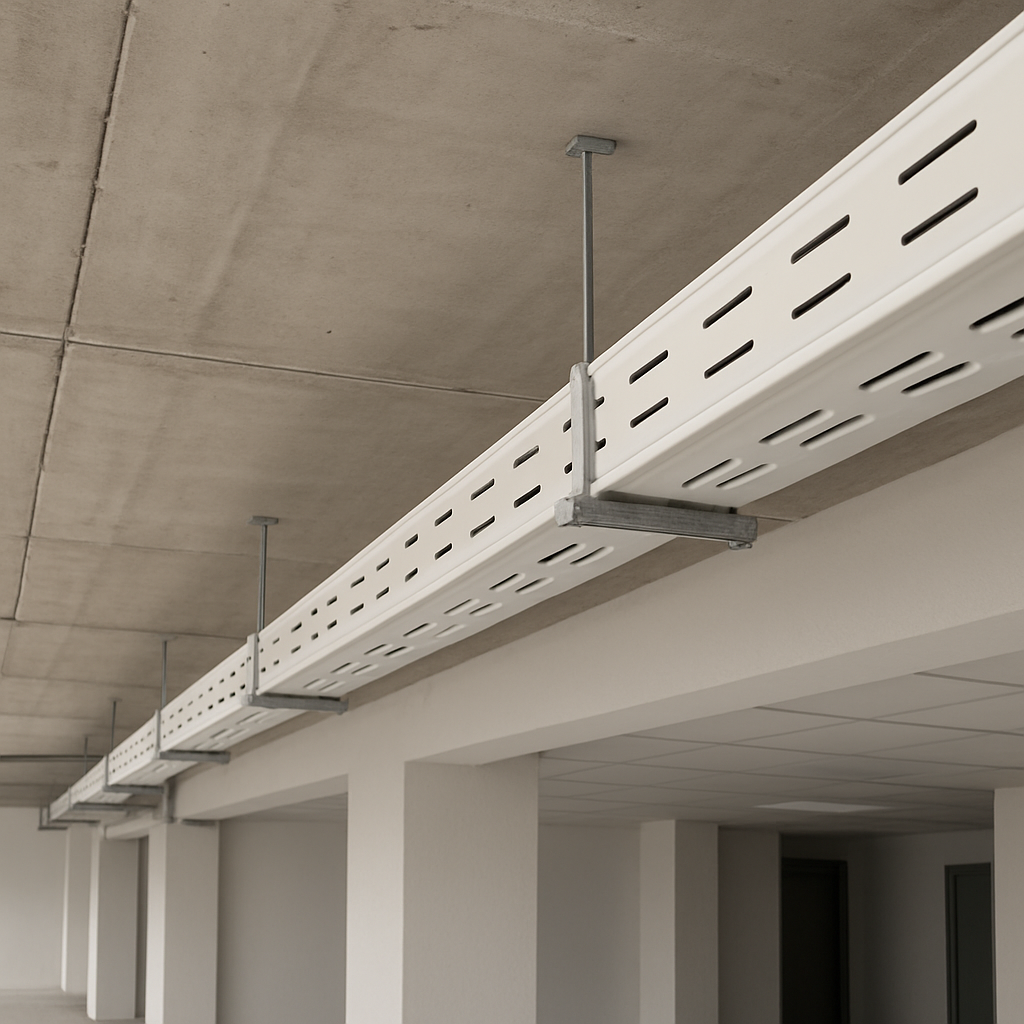In the world of electrical installations and infrastructure, channel cable trays play a crucial role in organizing and supporting cables. They provide a reliable and efficient cable management solution, ensuring that wiring systems are both safe and accessible. This article will delve into the different types of channel cable trays, their materials, and their applications.
Before diving into the types, it’s essential to understand what a channel cable tray is. A channel cable tray is a single-piece, solid-bottom cable support system. It is designed to carry electrical wires, data cables, and other types of wiring in commercial and industrial environments. These trays are particularly useful in scenarios where space is limited or where a clean, organized look is desired.
Materials Used in Channel Cable Trays
Channel cable trays are available in various materials, each offering unique benefits. The choice of material depends largely on the specific requirements of the installation, including environmental conditions, load capacity, and cost considerations.
Metal Cable Trays
Metal cable trays are known for their strength and durability. They are ideal for heavy-duty applications and environments where fire resistance is a critical factor.
- Steel Cable Trays: Steel is a common choice for cable trays because of its high strength and resistance to mechanical damage. It can withstand heavy loads and harsh conditions. Steel trays often have a galvanized finish to prevent corrosion.
- Aluminum Cable Trays: Aluminum trays are lighter than steel but still provide excellent strength and corrosion resistance. They are particularly suitable for outdoor installations or environments with corrosive conditions.
PVC Cable Trays
PVC, or polyvinyl chloride, cable trays offer a lightweight and cost-effective solution. They are non-conductive, which makes them ideal for applications where electrical insulation is necessary. PVC trays are resistant to corrosion and chemicals, making them suitable for both indoor and outdoor use.
Types of Channel Cable Trays
The design and structure of a channel cable tray can vary based on its intended application. Here are some common types of channel cable trays:
Chemins de câbles à fond plein
Solid bottom cable trays provide a continuous support surface, making them ideal for smaller cables that require additional protection. They are often used in environments where dust or dirt might accumulate, as the solid bottom prevents debris from entering the tray.
Perforated Cable Trays
Chemins de câbles perforés feature holes or slots on the bottom and sides, enabling improved ventilation and heat dissipation. They are suitable for applications where cable overheating is a concern. The perforations also make it easier to secure cables using ties or clamps.
Chemins de câbles en échelle
Although not a channel cable tray per se, ladder cable trays are worth mentioning. They consist of two side rails with rungs in between, resembling a ladder. This design provides maximum airflow and is often used for larger cables and high-voltage installations.
Benefits of Using Channel Cable Trays
Channel cable trays offer several advantages over other cable management systems:
- Organized Cable Management: They keep cables neatly organized, reducing the risk of tangling and damage.
- Easy Installation and Maintenance: Cable trays are easy to install and provide quick access for maintenance and modifications.
- Safety and Compliance: They help maintain compliance with safety standards by preventing cables from hanging loose or becoming damaged.
- Scalability: Channel cable trays can be easily expanded or modified to accommodate additional cables as needed.
Applications of Channel Cable Trays
Channel cable trays are used in a wide range of settings, from commercial buildings to industrial facilities. Here are some common applications:
Industrial Cable Tray Applications
In industrial environments, channel cable trays are used to support electrical wiring for machinery, lighting, and control systems. They are essential for organizing and protecting cables in manufacturing plants, refineries, and warehouses.
Commercial Building Cable Tray Applications
In commercial buildings, channel cable trays help manage the extensive wiring required for lighting, HVAC systems, and communication networks. They are often installed in ceilings or raised floors, providing a clean and unobtrusive cable routing system.
Data Centers and IT Infrastructure
Data centers require robust cable management systems to handle the vast amounts of data and power cables. Channel cable trays provide a structured solution that supports efficient cable routing and cooling.
Choosing the Right Channel Cable Tray
When selecting a channel cable tray for your project, consider the following factors:
- Environment: Assess the environmental conditions, including temperature, humidity, and potential exposure to chemicals or corrosive substances.
- Load Capacity: Determine the weight and volume of cables that the tray needs to support.
- Material: Choose a material that offers the necessary strength, durability, and corrosion resistance for your application.
- Cost: Consider the budget for your project and weigh the cost of different materials and designs against their benefits.
Conclusion
Channel cable trays are an integral part of modern cable management systems. By understanding the different types and materials available, you can select the right tray for your needs, ensuring a safe, organized, and efficient wiring installation. Whether you’re working in an industrial plant or a commercial office, channel cable trays provide a reliable solution for managing your electrical and data cables.



